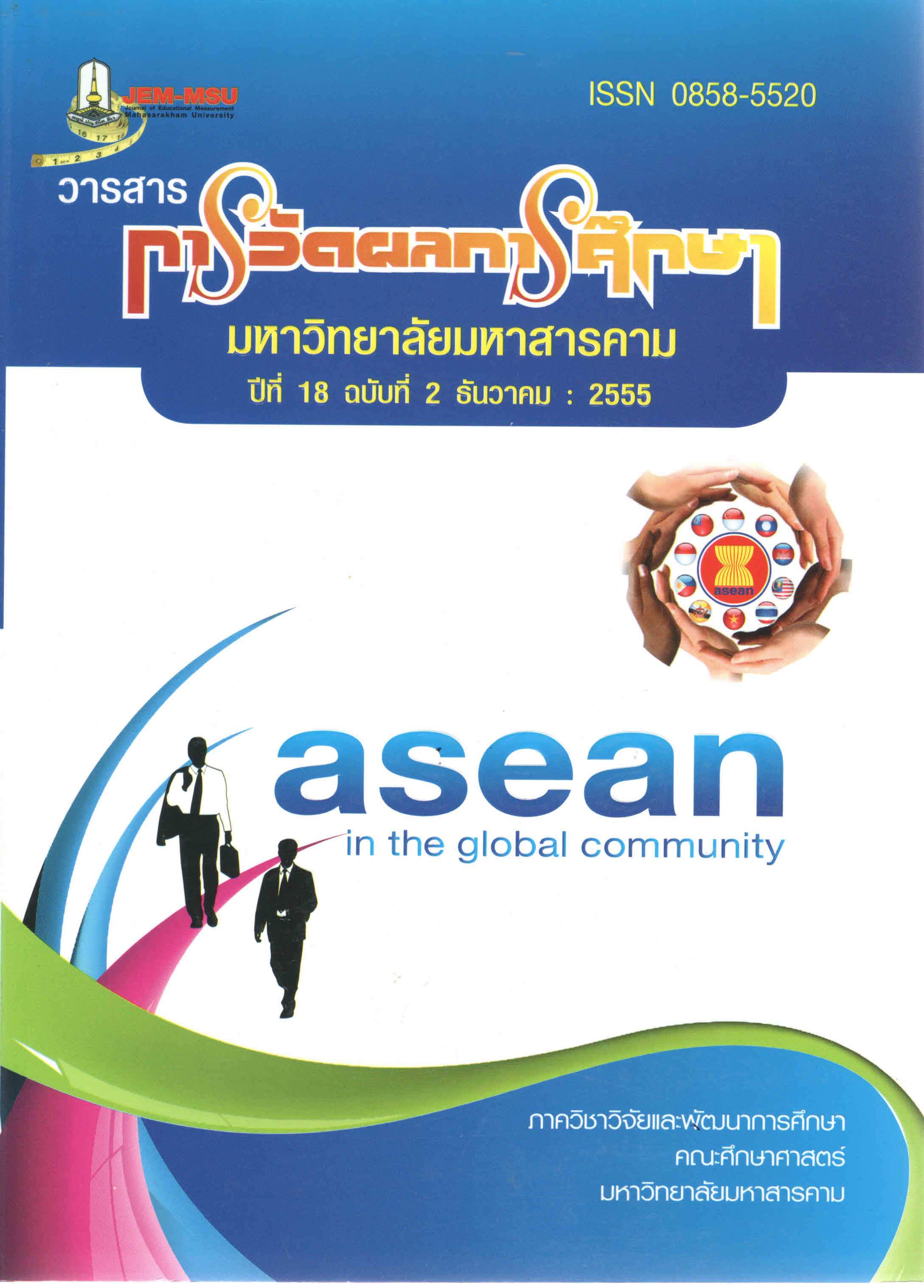The Causal Factors Influencing Physics Achievement of Matthayomsuksa 5 Students in Nongbualamphu Province
Main Article Content
Abstract
This study aimed to develop and examine the goodness of fit of the causal
factors influencing physics achievement of Mathayomsuksa 5 students in
Nongbualamphu province of model to the empirical data. The sample in this study
consisted of 766 Matthayomsuksa 5 students’ in Nongbualamphu province in the
academic year 2011, obtained using the multi-stage random sampling technique.
The instruments used in the study were : 1) a physics achievement test with difficulties
ranging .20 -.59, discriminating powers ranging .20 -.73 and a reliability of .683, 2)
an intelligence quotient test with difficulties ranging .24 - .80, discriminating powers
ranging .20 - .67 and a reliability of .822 and 3) a scale on factors influencing physics
achievement comprising 4 parts ; part 1 scale on physics attitude with discriminating
powers ranging .443 - .781 and a reliability of .920, Part 2 scale on emotional quotient
with discriminating powers ranging .300 - .557 and a reliability of .822, Part 3 scale on
achievement motive with discriminating powers ranging .512 - .789 and a reliability
of .934 and Part 4 scale on self-concept with discriminating powers ranging .259 - .731
and a reliability of .832. Data were analyzed using a computer program to computerize
for basic statistics, to check confirmation component validity, and to check construct
validity of the model of causal relationships. The results of the study were as :
The hypothesis model was in congruence with the empirical data, with Chi-square
=162.99, df = 163, p = 0.485, GFI index = .982, AGFI index = .969, CFI index = 1.000,
RMR =0.031, and RMSEA = 0. All of the variables in the model can explain the variance
of physics achievement at 44.7 percent. The factor directly influencing physics
achievement was achievement motive, intelligence quotient and emotional
quotient. The factors directly and indirectly influencing physics achievement were
self-concept.
Article Details
The content and information contained in the published article in the Journal of Educational Measurement Mahasarakham University represent the opinions and responsibilities of the authors directly. The editorial board of the journal is not necessarily in agreement with or responsible for any of the content.
The articles, data, content, images, etc. that have been published in the Journal of Educational Measurement Mahasarakham University are copyrighted by the journal. If any individual or organization wishes to reproduce or perform any actions involving the entirety or any part of the content, they must obtain written permission from the Journal of Educational Measurement Mahasarakham University.


